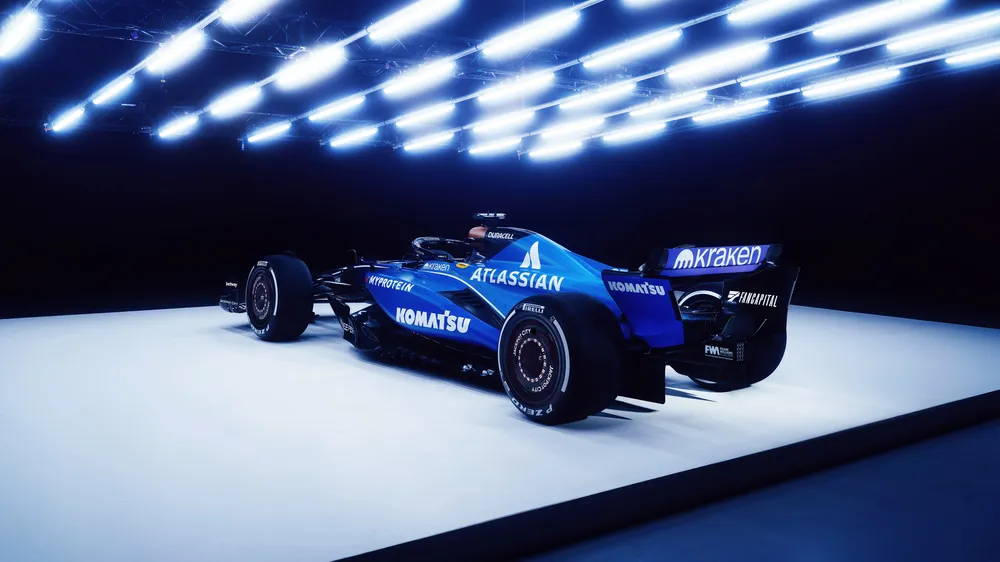
Williams Racing FW47
Williams Racing, a name steeped in Formula 1 history, enters the 2025 season with their latest challenger, the FW47. Unveiled in February 2025, this car represents a crucial step in the team’s long-term strategy to return to the sharp end of the grid. Driven by their established talent, Alex Albon, and new recruit Carlos Sainz Jr., the FW47 aims to build upon the foundational work and progress made in recent seasons.
The Grove-based outfit has been on a journey of rebuilding and refinement, focusing on operational efficiency and a solid technical base. The FW47 is the latest iteration of this commitment, seeking to deliver more consistent performance and maximize every opportunity for points in what promises to be another highly competitive season.
Chassis and Structure
The FW47 utilizes a carbon-fibre monocoque chassis, a standard in modern F1, meticulously constructed from carbon epoxy and honeycomb composites. This design is engineered for both immense rigidity, crucial for stable aerodynamic performance, and minimal weight to meet the FIA’s regulations. Safety structures, including the cockpit survival cell and halo, are integrated to ensure driver protection.

Power Unit
Williams Racing continues its long-standing partnership with Mercedes, employing the Mercedes-AMG M16 E Performance power unit. This state-of-the-art 1.6-liter direct injection V6 turbocharged hybrid engine combines the internal combustion engine with sophisticated energy recovery systems (MGU-K and MGU-H) to deliver approximately 1,000 bhp. The power unit is designed for maximum efficiency and robust performance across various circuit demands.
Transmission
The car features a Mercedes-AMG 8-forward + 1 reverse gear seamless sequential semi-automatic shift gearbox. Gear selection is handled electro-hydraulically, ensuring lightning-fast and consistent shifts. It also includes an electro-hydraulically operated carbon multi-plate clutch and a limited-slip friction clutch epicyclic differential.
Suspension
A notable change for the FW47 is the adoption of a push-rod rear suspension layout, aligning it with the latest Mercedes package (which was a carryover from their 2024 design). This is a shift from Williams’ previous pull-rod approach at the rear. Both the front and rear suspensions use carbon-fibre/titanium wishbones with pushrod-operated torsion bars. Dampers are mounted inboard, inside the front of the monocoque for the front suspension, and within the carbon suspension units at the rear. This setup aims to provide improved consistency under braking and optimize aerodynamic flow around the suspension arms.
- Engine
- Drivetrain
- Dimension
- Performance
Configuration | Mercedes-AMG F1 M16 E Performance 90º V6 |
Location | Mid, longitudinally mounted |
Weight | 150 kilo / 330.7 lbs |
Construction | aluminium block and head |
Displacement | 1,600 cc / 97.6 cu in |
Valvetrain | 4 valves / cylinder, DOHC |
Fuel feed | Direct Fuel Injection |
Lubrication | Dry sump |
Aspiration | Turbo |
Power | 740 bhp / 552 kW |
Red Line | 15,000 rpm |
BHP/Liter | 463 bhp / liter |
Chassis | carbon-fibre composite monocoque |
Suspension (fr/r) | double wishbones, push-rod actuated torsion-bar springs and dampers, anti-roll bar |
Steering | rack-and-pinion, power assisted |
Brakes (fr/r) | ventilated carbon ceramic discs, 6-pot caliper |
Gearbox | Paddle Operated 8 speed Automatic |
Drive | Rear wheel drive |
Weight | 800 kilo / 1,764 lbs |
Wheels (fr/r) | BBS 13.2 x 18 / 16.9 x 18 |
Tyres (fr/r) | Pirelli P Zero 305/720 – 18 / 405/720 – 18 |
Combined Power | 901 bhp / 672 kW |
Power to weight | 1.13 bhp / kg |
